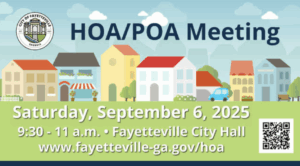The Fayette County Board of Education on Nov. 3 got a an update on the ratios of pupils to teachers that shows Fayette schools with an overall ratio of 13:1, a figure significantly lower than the national average.
Assistant Superintendent Terry Oatts said the pupil-to-teacher ratio is a metric resulting from the total student enrollment for a school or district divided by the number of adults in the school or district involved in classroom instruction.
The school system’s current student enrollment is 20,092 students. The district has 1,572 certified classroom teachers and classroom-based paraprofessionals, resulting in a district-wide pupil-to-teacher ratio of 13:1. Oatts said fewer than 100 of the instructional personnel are parapros.
Fayette schools have an elementary student enrollment of 8,139 with a total of 731 teachers and full-time classroom-based paraprofessionals for an elementary grades pupil-to-teacher ratio of 11:1.
Fayette’s elementary ratios per school are 9:1 at Oak Grove, 10:1 at Braelinn and Cleveland, 11:1 at Burch, Fayetteville, Kedron, North Fayette and Spring Hill and 12:1 at Crabapple, Huddleston, Inman, Minter, Peachtree City and Peeples.
In middle schools, Fayette has a student enrollment of 4,858 with a total of 337 teachers and full-time classroom-based paraprofessionals for a middle grades pupil-to-teacher ratio of 14:1. Parapros are not four-year-degree certified teachers, and are paid less than teachers.
The ratios are 14:1 at Bennett’s Mill, Flat Rock, Rising Starr and Whitewater while the ratio at Booth is 15:1.
And in the county’s high schools, Fayette has a student enrollment of 7,095 with a total of 524 teachers and full-time classroom-based paraprofessionals for a high school grades pupil-to-teacher ratio of 14:1.
Figures for individual schools show a 12:1 ratio at Sandy Creek, a 14:1 ratio at Starr’s Mill, a 15:1 ratio at Fayette County and a 16:1 ratio at Whitewater and McIntosh.
Oatts noted that schools with larger student enrollment can have a higher ratio.
When it comes to class size, that is a different measure, Oatts said. Class size differs significantly by grade and by program area, he said, citing the example of special education classes that have much smaller class sizes.
Concerning the national pupil-to-teacher ratios, Oatts said the most recent national data is from 2011.
“The national average pupil-to-teacher ratio for elementary schools is essentially 16.1 and the national pupil-to-teacher ratio for secondary schools (which includes middle and high school) is 17.1,” Oatts said. “Our elementary and middle school pupil-to-teacher ratios are much smaller than the most recent national averages.”











Leave a Comment
You must be logged in to post a comment.